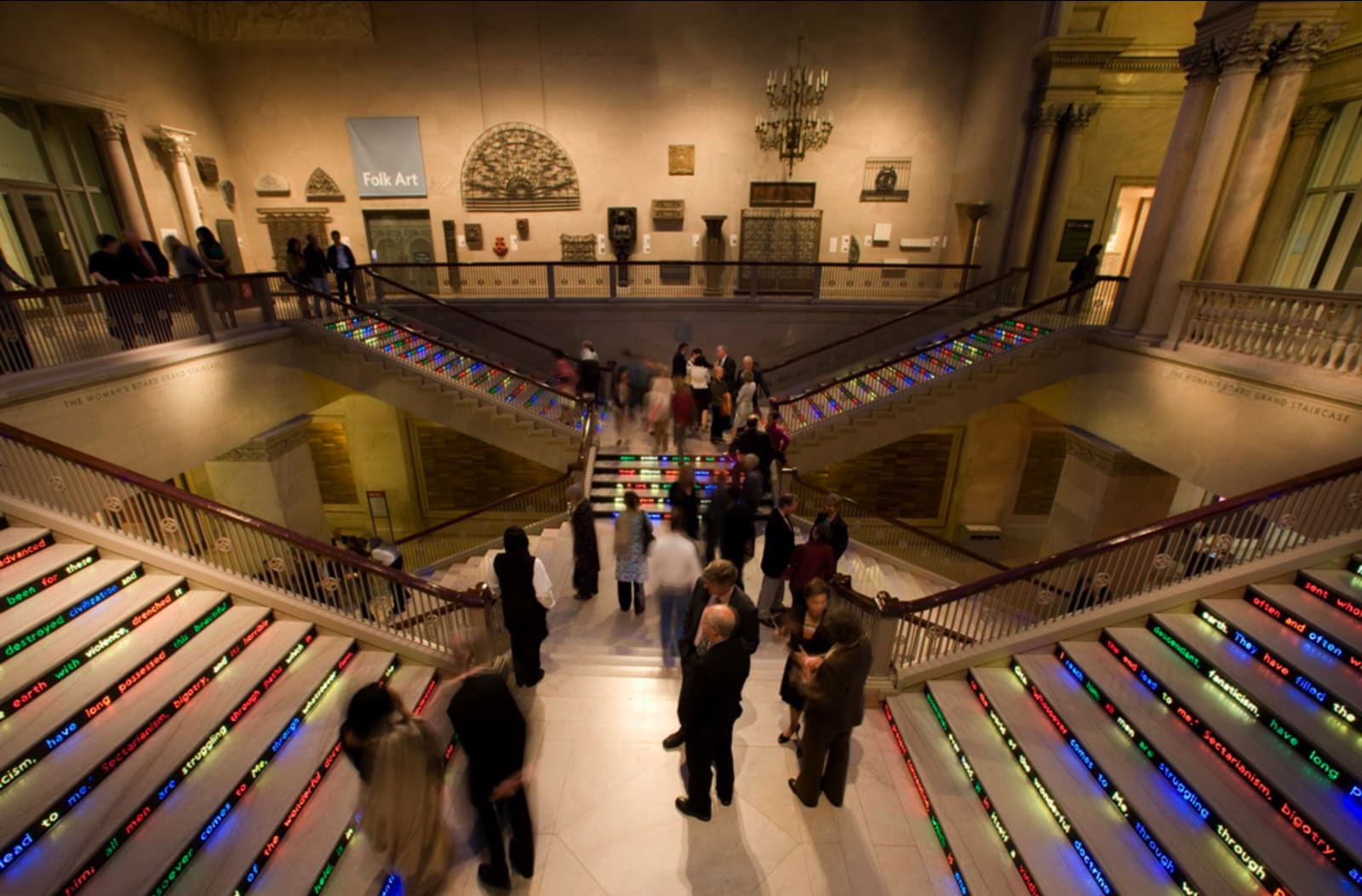Jitish Kallat b. 1974
forms, making out of them mirrors against which to assess our present. It is based on a speech that
Mahatma Gandhi made at the Sabarmati Ashram in Ahmedabad on 11 March 1930, a day before he
began the Dandi salt march against British laws taxing salt production in India, inspiring a nationwide
civil disobedience movement.
In Gandhi’s own words, the speech is his will in which he lists out instructions on taking the
resistance forward in the event of his arrest or death. The artist replays this historic speech as a
‘Public Notice’—a call to attention, a reminder of promises and a reading out of rights and
obligations—through a massive installation which reproduces Gandhi’s words letter by letter in
simulated resin bones. The bones evoke excavated remains, archaeological finds or sacred relics. In
stark contrast to the text they inscribe—a strident extraction of the promise of non-violence– the
bones seem to capture a long history of human agression, conjuring up images of unmarked graves
and disappeared bodies whose remains are exhumed and enumerated as evidence or cast into a
mammoth memorial.



